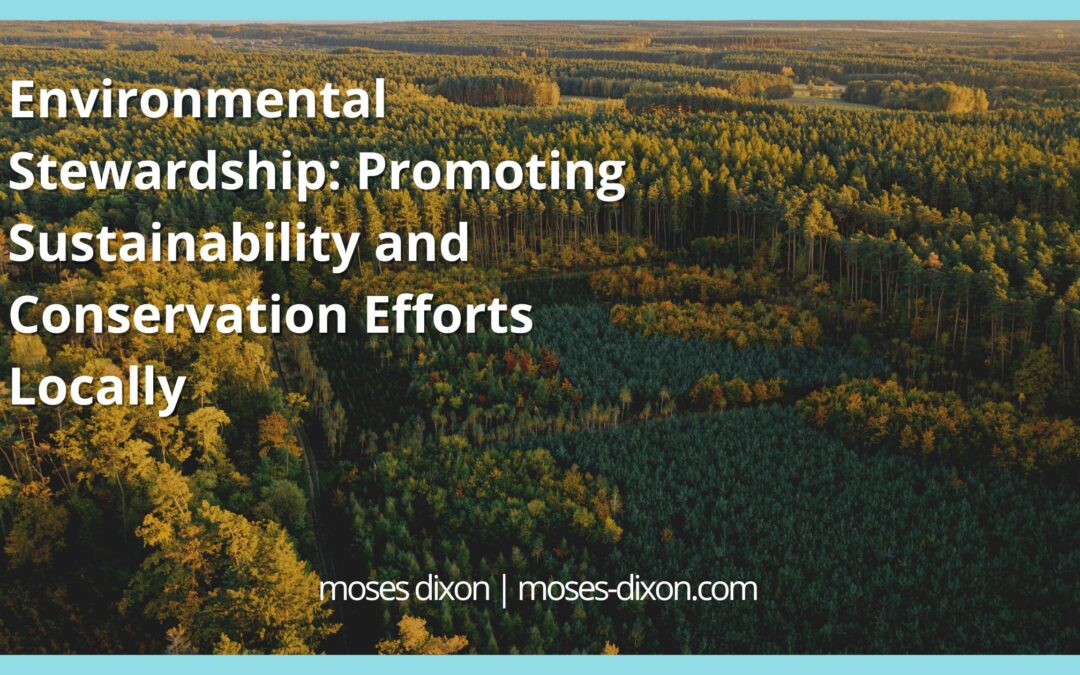In an era marked by growing concerns about climate change, habitat loss, and the depletion of natural resources, environmental stewardship has taken center stage as a crucial strategy for safeguarding the planet’s future. Environmental stewardship involves responsible and sustainable management of natural resources and ecosystems to ensure their preservation for present and future generations. While global efforts to address environmental challenges are essential, the impact of these issues can often be felt most acutely at the local level. This is where the power of community-driven environmental stewardship truly shines.
Defining Environmental Stewardship
Environmental stewardship encompasses a range of practices, policies, and actions to reduce our ecological footprint and promote a harmonious relationship between human activities and the environment. It goes beyond simply conserving resources; it involves a holistic approach that considers the interconnectedness of ecosystems, human well-being, and the long-term viability of our planet.
At the local level, environmental stewardship involves engaging individuals, businesses, and communities to take proactive steps in preserving their natural surroundings. This can include initiatives such as reforestation projects, waste reduction campaigns, energy efficiency programs, and the protection of local wildlife habitats. The goal is to foster a sense of responsibility and ownership among community members, driving them to participate actively in sustainable practices.
The Importance of Local Action
While global agreements and policies are vital in addressing overarching environmental challenges, local action plays a pivotal role in enacting change on a meaningful scale. Communities possess unique insights into their surroundings and often have a deeper understanding of their challenges. This knowledge and a strong sense of attachment to the local environment fuel the passion needed to drive effective conservation efforts.
One of the key advantages of local environmental stewardship is its ability to create tangible and visible outcomes. When community members witness the positive impact of their actions, it fosters a sense of accomplishment and encourages further engagement. This ripple effect can lead to a culture of sustainability that extends beyond the initial efforts, influencing future generations to carry the torch of stewardship forward.
Building Partnerships and Collaborations
Effective environmental stewardship requires collaboration among various stakeholders, including individuals, non-profit organizations, local businesses, educational institutions, and government agencies. By pooling resources, expertise, and efforts, these partnerships amplify the reach and impact of sustainability initiatives.
Local businesses, for example, can play a crucial role by adopting eco-friendly practices, reducing waste, and supporting environmentally conscious products. In return, they contribute to their communities well-being and enhance their reputation as responsible corporate citizens.
Schools and universities also have a significant role in nurturing the next generation of environmental stewards. Incorporating sustainability into the curriculum and organizing hands-on learning experiences, such as tree planting or clean-up events, instills a sense of environmental responsibility from a young age.
Empowering Individuals for Change
The individuals who commit their time, energy, and passion to the cause are at the heart of any successful environmental stewardship effort. Empowering individuals with knowledge and tools to make sustainable choices is fundamental in driving local conservation efforts.
Community workshops, seminars, and online resources can provide valuable information on recycling, energy conservation, water efficiency, and sustainable gardening. These educational initiatives raise awareness and equip individuals with practical skills to implement sustainable practices in their daily lives.
Even on a small scale, encouraging behavioral changes can have a significant cumulative impact. Simple actions like using reusable bags, reducing single-use plastics, and participating in local clean-up events can collectively contribute to a healthier environment.
Overcoming Challenges and Looking Ahead
While the potential of local environmental stewardship is vast, it has challenges. Limited resources, competing priorities, and resistance to change can hinder progress. However, these obstacles can often be overcome through creative solutions, community engagement, and the unwavering dedication of passionate individuals.
As we look to the future, the role of local environmental stewardship becomes increasingly crucial. Climate change, pollution, and habitat degradation pose significant threats, underscoring the urgency of action at all levels. By fostering a culture of sustainability, empowering individuals, and building strong partnerships, communities can be the driving force behind positive environmental change.
Environmental stewardship is not a distant concept; it is a call to action that resonates deeply within our communities. We create a ripple effect extending beyond geographical boundaries by championing sustainability and conservation efforts locally. As stewards of our planet, it is our responsibility to safeguard the environment for current and future generations, and by working together, we can make a lasting impact that transcends time.
